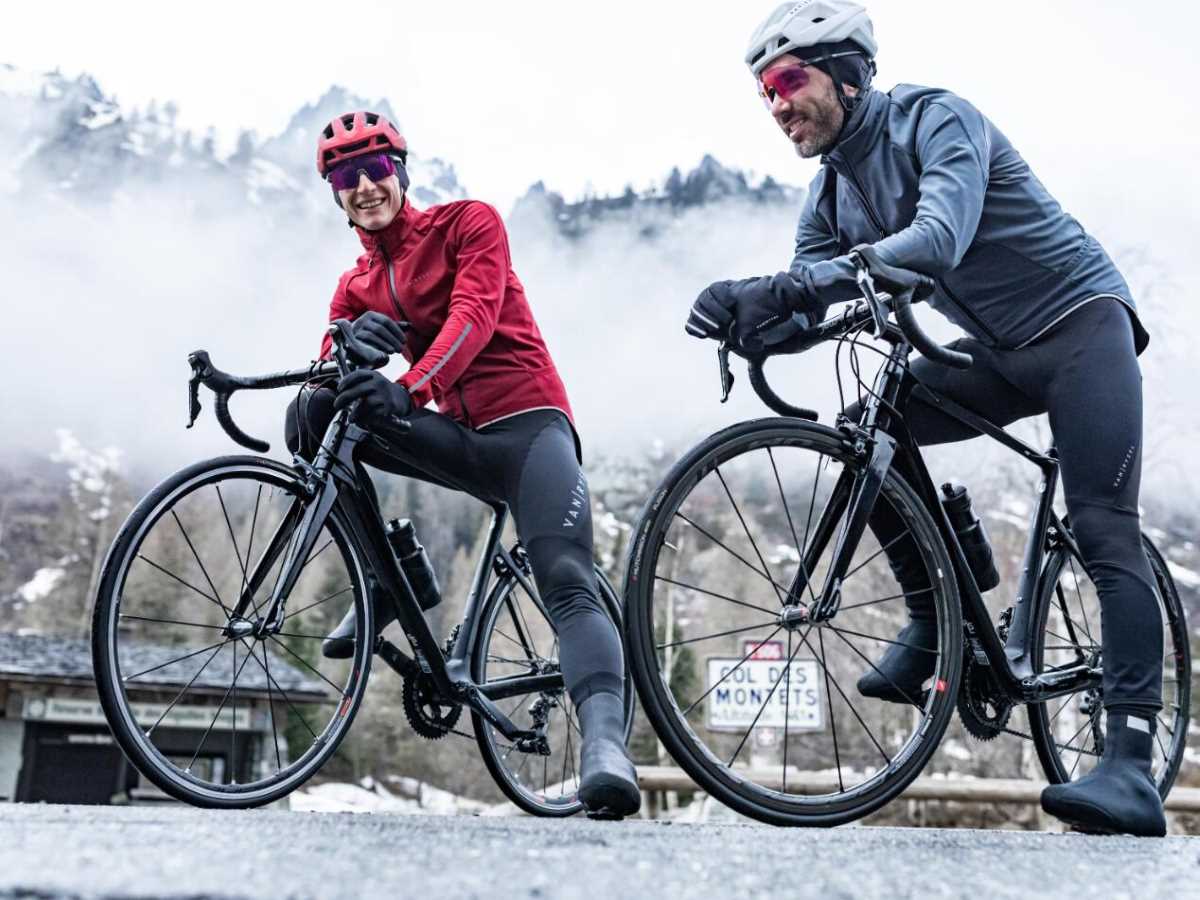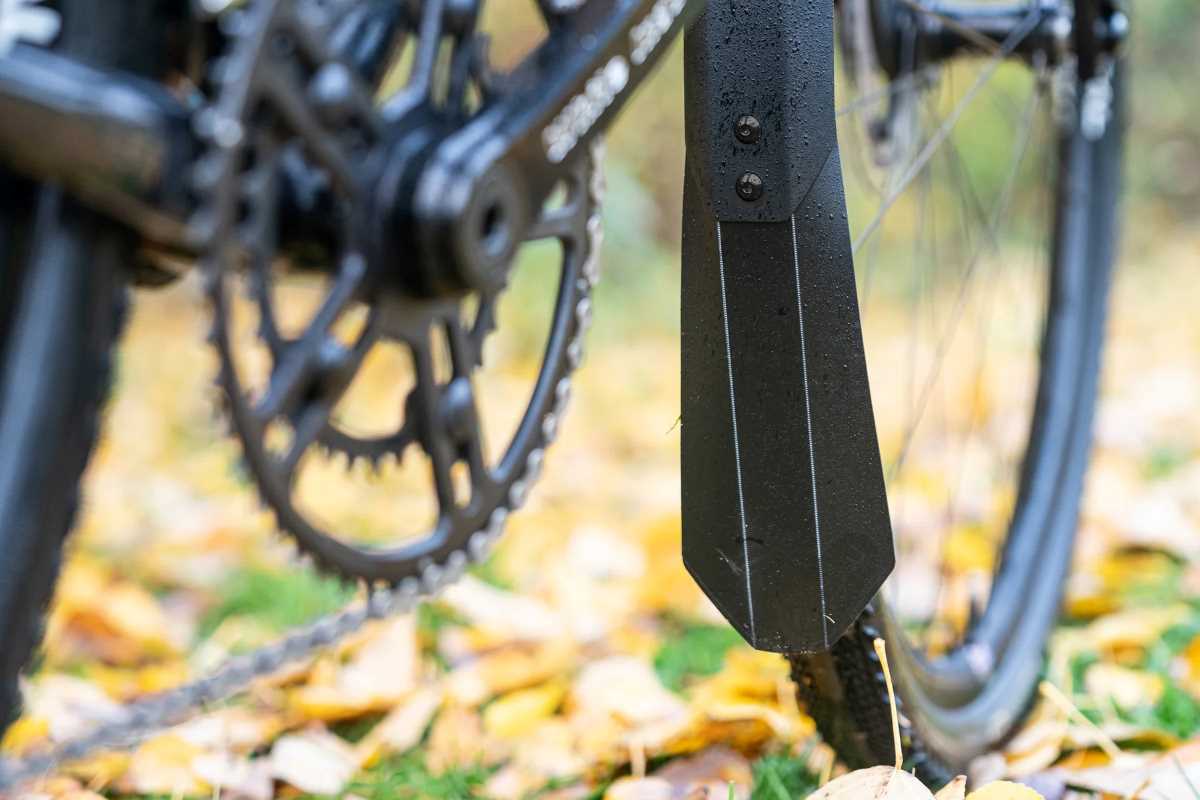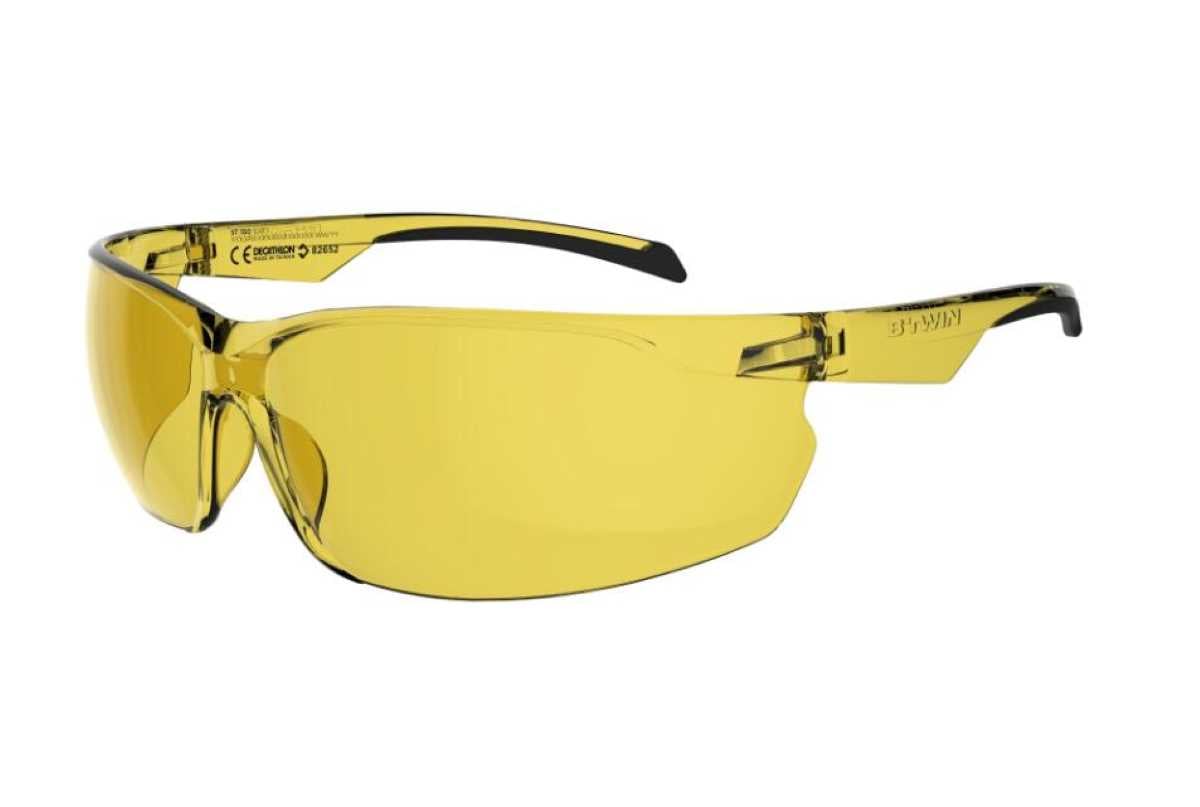
Photo by Decathlon
Introduction
As the days grow shorter and the temperature drops, many cyclists retreat indoors, stashing their bikes until the warmer months return. However, for dedicated riders, winter can be an excellent opportunity to enhance your skills, build endurance, and maintain fitness. In this article, we’ll explore the importance of winter cycling training and provide tips on how to make the most of this season to become a better cyclist.

Photo by Zwift
1. Embrace the Indoor Trainer
When winter weather becomes too harsh, an indoor trainer can be your best friend. These devices allow you to ride your bike in the comfort and safety of your home. You can choose from a range of indoor training programs, such as Zwift, TrainerRoad, or Sufferfest, which provide structured workouts and virtual riding experiences. Utilizing an indoor trainer not only maintains your fitness but also allows you to focus on specific training goals, such as improving your power output or refining your pedaling technique.
The Sanctuary of Home Training
Winter weather can be unpredictable and sometimes downright treacherous for outdoor cycling. Cold temperatures, rain, snow, and icy roads can make venturing outside both uncomfortable and unsafe. This is where the indoor trainer becomes your winter cycling sanctuary.
Indoor trainers provide a controlled environment where you can maintain your training regimen without worrying about adverse weather conditions. You won’t have to bundle up in layers of clothing or navigate slippery roads. Instead, you can hop on your bike in the comfort and safety of your own home, maintaining your fitness routine year-round.
Structured Workouts for Progress
One of the most significant advantages of indoor trainers is the ability to follow structured workouts tailored to your specific goals. Popular training platforms like Zwift, TrainerRoad, and Sufferfest offer a plethora of training plans and workouts designed by professional coaches. These plans cater to various cycling disciplines, whether you’re a road cyclist, mountain biker, or triathlete.
Structured workouts help you make the most of your time on the trainer by targeting specific aspects of your fitness. Whether you want to build endurance, increase your power output, work on sprinting, or improve your climbing ability, you can find workouts that align with your objectives. These programs often incorporate intervals, recovery periods, and progressive challenges to ensure you’re continually making gains.

Photo by Zwift
Virtual Riding Experiences
One of the most exciting aspects of indoor trainers is the opportunity to engage in virtual riding experiences. Platforms like Zwift have created immersive digital worlds where you can ride with cyclists from around the globe. This not only adds an element of fun and competition but also helps combat the potential monotony of indoor training.
In these virtual environments, you can join group rides, participate in races, and even tackle epic climbs, all from the comfort of your home. The gamification aspect of these platforms can be highly motivating, pushing you to work harder and stay committed to your training goals. Plus, it provides a sense of community and camaraderie with fellow riders, even if you’re miles apart.
Targeted Skill Improvement
Indoor training also allows you to focus on specific aspects of your cycling technique. Without the distractions of traffic or changing terrain, you can hone your pedaling efficiency, work on your posture, and practice your cadence. Some indoor training programs even offer video analysis tools to provide real-time feedback on your form, helping you make subtle adjustments that can lead to significant improvements in your riding.
Time Efficiency
Winter days are shorter, and the limited daylight can make it challenging to find time for outdoor rides. Indoor training eliminates this obstacle, as you can hop on the trainer whenever it’s convenient for you, regardless of the time of day or weather conditions. This time efficiency can be a game-changer for those with busy schedules, allowing you to maintain consistent training throughout the winter.

Photo by Portland Design Works
2. Maintain Your Bike
Winter can be tough on your bicycle. The combination of wet roads, salt, and mud can lead to accelerated wear and tear. Regularly clean and lubricate your bike to prevent corrosion and keep it running smoothly. Pay extra attention to your drivetrain, as it’s particularly susceptible to winter grit and grime. Invest in fenders to keep road spray at bay, and consider using wider, puncture-resistant tires to increase traction and minimize flats in slippery conditions. Elitewheels’ Drive carbon road and gravel wheels have wide inner rim widths that can safely accomodate wider tires
Cleanliness is Key
Winter cycling means encountering wet and often salty roads. These conditions can lead to accelerated wear and tear on your bike, potentially causing corrosion, rust, and diminished performance. To counter these effects, make regular bike cleaning a priority during the winter months.
- Cleaning Schedule: Establish a cleaning routine, aiming for at least once a week or after every particularly messy ride. Pay attention to the frame, drivetrain, brakes, and wheels.
- Use a Gentle Cleaning Solution: Avoid using harsh chemicals that can damage your bike’s finish. Instead, opt for a mild detergent or bike-specific cleaning solution. Mix it with warm water to remove grime effectively.
- Brushes and Sponges: Invest in a set of brushes and sponges designed for bike cleaning. These tools can help you access hard-to-reach areas, such as between the cassette sprockets and chainrings.
- Thorough Rinse: After cleaning, give your bike a thorough rinse with clean water to remove any remaining soap or debris. Pay extra attention to the drivetrain, as this area is particularly susceptible to grit buildup.
Lubrication for Smooth Operation
Winter weather can strip your bike of its lubrication and make components susceptible to rust. To ensure smooth operation and longevity, follow these lubrication tips:
- Use Appropriate Lubricants: Select a bike-specific lubricant suitable for wet and cold conditions. Apply it sparingly to the chain, derailleurs, and cables.
- Focus on the Drivetrain: The drivetrain is especially vulnerable during winter rides. Apply lubricant to the chain, derailleur pulley wheels, and cassette, and then wipe off excess lubricant to prevent dirt buildup.
- Brake Maintenance: Check and lubricate brake pivot points, but avoid getting lubricant on the brake pads or rotors, as this can impair braking performance.

Photo by Muc-Off
Protection with Fenders
Fenders, also known as mudguards, are invaluable accessories during the winter season. They serve two primary purposes:
- Reduced Road Spray: Fenders minimize the amount of water, mud, and debris that gets kicked up onto your bike and yourself while riding. This not only keeps you cleaner but also protects your bike from excessive exposure to moisture and road salt.
- Longevity: By reducing exposure to road spray, fenders can significantly extend the life of your bike’s components, especially the drivetrain.
Ensure that your fenders are properly installed and adjusted to provide optimal coverage. Some bikes may require special fender mounts or adaptations.
Choose Wider, Puncture-Resistant Tires
Winter riding often means navigating unpredictable road conditions, including ice, slush, and debris. To enhance your bike’s stability and reduce the risk of flats, consider switching to wider and puncture-resistant tires.
- Wider Tires: Wider tires offer improved traction on slippery surfaces, better handling in wet conditions, and increased comfort on rough roads. They can also run at slightly lower pressures for added grip.
- Puncture Resistance: Invest in tires with puncture-resistant layers or reinforced casings. These tires are less likely to succumb to sharp debris like glass or thorns, which can be hidden beneath winter slush.
Before making any tire changes, ensure that your frame and fork have enough clearance for wider tires. Consult your bike’s manufacturer or a local bike shop for guidance on tire size compatibility.
Elitewheels’ Drive series carbon road wheels and gravel wheels have been specifically designed to accomodate wider tires that can increase grip in wet and snowy conditions.

3. Set Clear Goals and Maintain Consistency
Winter training can sometimes feel monotonous, so setting clear and achievable goals is essential to stay motivated. These goals could be related to increasing your endurance, boosting your FTP (functional threshold power), or mastering a particular cycling skill. Maintain consistency in your training schedule, and consider joining a virtual cycling community or group rides to keep your enthusiasm high.
Goal-Setting for Motivation
Setting specific and achievable goals provides you with a sense of purpose and motivation throughout the winter training season. Here’s why it matters:
- Motivation: Having a clear goal gives you a reason to get on your bike, even when the weather is less than inviting. It’s a source of motivation that can push you through the more challenging days.
- Measurement: Goals provide a benchmark for progress. Whether you’re aiming to increase your endurance, improve your power output, or work on specific cycling skills, having quantifiable objectives allows you to track your improvement over time.
- Focus: Goals help you concentrate your efforts on specific areas of your cycling that require attention. This targeted approach can lead to more significant and efficient improvements.
Types of Goals
When setting goals for your winter training, consider a variety of objectives that align with your cycling aspirations. Here are some common types of goals:
- Endurance: Increase the duration and distance of your rides to build cardiovascular fitness and stamina. For example, you might aim to complete a specific long-distance route by the end of the winter.
- Power Output: Improve your FTP (Functional Threshold Power) by incorporating interval training into your workouts. Set a target FTP increase and work toward achieving it over the winter.
- Skill Mastery: Identify specific cycling skills you’d like to refine. This could include cornering, climbing, or descending techniques. Practice these skills regularly during your indoor and outdoor rides.
- Weight Management: Use the winter months to focus on maintaining or achieving a healthy cycling weight. Set goals related to nutrition and weight loss or maintenance.
- Race Preparation: If you have competitive cycling goals, use the winter to prepare for the upcoming race season. Set objectives related to race-specific training, such as time trials or sprint intervals.

Photo by Zwift
Consistency is Key
Consistency is the backbone of successful winter training. Here’s why it matters:
- Adaptation: Consistent training allows your body to adapt progressively to the stress of cycling. Over time, this leads to improved fitness and performance.
- Habit Formation: Consistency helps form positive training habits. When cycling becomes part of your routine, it’s easier to stay motivated and committed to your goals.
- Preventing Loss of Fitness: Irregular training can lead to a loss of fitness gains. To maintain and build upon your progress, aim for regular training sessions throughout the winter.
Leveraging Virtual Communities and Group Rides
Joining a virtual cycling community or participating in group rides can provide an additional layer of motivation and support during the winter months:
- Accountability: Being part of a community or group ride can hold you accountable for your training. When others are expecting you, you’re more likely to stick to your schedule.
- Variety: Group rides can inject variety into your training routine. Riding with others, whether virtually or in person, often leads to different routes, workouts, and challenges that keep training interesting.
- Social Interaction: Cycling can be a solitary activity, but group rides provide opportunities for social interaction, which can boost your enthusiasm and make winter training more enjoyable.

4. Cross-Training and Active Recovery
Mixing in other forms of exercise during the winter can be beneficial. Activities like swimming, running, or even cross-country skiing can help maintain your cardiovascular fitness and provide a mental break from the bike. Active recovery days with light rides or low-intensity activities can also help prevent burnout and reduce the risk of overtraining.
Cross-Training Benefits
Cross-training involves incorporating different forms of exercise into your training routine to complement your cycling efforts. Here are several benefits of cross-training during the winter months:
- Diverse Muscle Engagement: Cycling primarily targets certain muscle groups. Cross-training activities engage different muscles, helping to prevent imbalances and strengthen your overall fitness. For example, running engages your leg muscles differently from cycling, contributing to a more balanced musculature.
- Cardiovascular Fitness: Maintaining cardiovascular fitness is vital for cycling performance. Cross-training activities like swimming, running, or even indoor rowing can help you maintain or improve your aerobic capacity.
- Mental Refreshment: Winter training can sometimes become monotonous, leading to a mental burnout. Cross-training provides a mental break from the bike, allowing you to enjoy a change of scenery and a different physical challenge.
- Injury Prevention: Cycling-related injuries often result from repetitive motions. Cross-training introduces variety, reducing the risk of overuse injuries.

Choosing Cross-Training Activities
The choice of cross-training activities depends on your preferences, fitness goals, and available resources. Here are some popular options:
- Swimming: Swimming is an excellent low-impact exercise that provides a full-body workout. It enhances cardiovascular fitness, flexibility, and strength while giving your joints a break from the impact of cycling.
- Running: Running is a high-impact activity that can help improve leg strength and endurance. It’s easily accessible and can be done outdoors or on a treadmill, depending on your climate.
- Cross-Country Skiing: If you live in an area with snow, cross-country skiing is an outstanding winter activity. It works both your upper and lower body and provides an excellent cardiovascular workout.
- Indoor Rowing: Rowing machines offer a full-body workout that complements cycling well. They improve upper body strength and provide an intense cardiovascular workout.
- Yoga and Pilates: These practices enhance flexibility, balance, and core strength. Incorporating yoga or Pilates into your routine can improve your posture on the bike and reduce the risk of cycling-related injuries.
Active Recovery Days
Active recovery days are an essential part of any training plan, including winter cycling. These days involve light rides or low-intensity activities that promote recovery and reduce the risk of overtraining. Here’s why active recovery is crucial:
- Muscle Recovery: Active recovery helps flush metabolic waste from your muscles, reducing soreness and promoting faster recovery.
- Mental Rejuvenation: It provides a mental break from intense training, helping to prevent mental burnout and maintain enthusiasm for cycling.
- Improved Consistency: Active recovery days can help you maintain a consistent training schedule by preventing injury and fatigue.
- Long-Term Performance: Incorporating active recovery into your training program can lead to better long-term performance gains.
Active recovery rides should be done at a low intensity, typically at a pace where you can comfortably hold a conversation. They can be shorter in duration compared to your regular training rides.

Photo by Decathlon
5. Dress Smartly for Cold Weather Riding
Don’t let the cold deter you from riding outdoors. With the right clothing, you can stay warm and comfortable even in chilly conditions. Layering is key to regulating your body temperature. Start with a moisture-wicking base layer to keep sweat away from your skin, add insulating layers for warmth, and finish with a windproof and waterproof outer layer to shield against the elements. Don’t forget warm accessories like thermal gloves, shoe covers, and a cycling cap or balaclava to protect your extremities.
Layering for Optimal Comfort
Layering is the foundation of dressing for cold weather cycling. This approach allows you to adapt to changing conditions and maintain comfort throughout your ride. Here’s how to layer effectively:
- Base Layer: Start with a moisture-wicking base layer. This layer, worn against your skin, helps transfer sweat away from your body, keeping you dry and reducing the risk of chilling. Look for base layers made from materials like merino wool or synthetic fabrics designed to wick moisture efficiently.
- Insulating Layers: Over your base layer, add one or more insulating layers to trap heat. Depending on the temperature, you can choose from lightweight to heavyweight insulating materials like fleece, down, or synthetic insulated jackets. These layers help retain your body heat while allowing moisture to escape.
- Outer Layer: The outer layer serves as a barrier against wind, rain, and snow. It should be windproof and waterproof to shield you from the elements. Cycling-specific jackets with adjustable vents and reflective elements are excellent choices. Softshell jackets are versatile options for cold and dry conditions, while hardshell jackets provide maximum protection against rain and snow.
Lower Body Clothing
When it comes to your lower body, consider these clothing options for cold weather cycling:
- Cycling Tights or Bibs: Invest in thermal cycling tights or bibs to keep your legs warm. Look for options with a brushed or fleece-lined interior for added insulation.
- Leg Warmers or Thermal Knee Warmers: These are handy accessories that you can add or remove depending on the temperature. They provide extra warmth for your legs without the need for additional layers.

Photo by Decathlon
Extremity Protection
Your extremities, such as your hands, feet, and head, are particularly vulnerable to the cold. Here’s how to protect them:
- Thermal Gloves: Insulated, windproof, and waterproof gloves are essential to keep your hands warm and functional. Make sure they are breathable to prevent moisture buildup.
- Shoe Covers: Neoprene or insulated shoe covers help retain heat and protect your feet from cold wind and rain. Consider using thermal socks as well for added warmth.
- Cycling Cap or Balaclava: Cover your head to prevent heat loss. A cycling cap fits comfortably under your helmet and shields your head from wind and rain. A balaclava provides full-face coverage, keeping your face and neck warm.
Eye Protection
Don’t forget about your eyes. In cold weather, cycling glasses with clear or low-light lenses can protect your eyes from wind, debris, and cold air. They also help to keep your vision clear in varying conditions.
Accessories
Consider these additional accessories to enhance your cold weather cycling experience:
- Neck Gaiter: A neck gaiter or buff can be pulled up to cover your face and neck when the temperature drops, providing extra warmth and protection.
- Arm Warmers: These can be added or removed depending on temperature changes, offering additional warmth for your arms.
- Toe Warmers: If you find your toes getting cold, disposable toe warmers can be placed inside your cycling shoes to provide extra insulation.
Test and Adjust
Before heading out on a long ride in cold weather, it’s a good idea to do a short test ride to make sure you’re dressed appropriately. This allows you to assess your comfort and make any necessary adjustments to your clothing layers.
Remember that the key to staying comfortable while cycling in the cold is staying warm but not overheating. Adjust your clothing layers and accessories as needed to find the right balance for your comfort.
By following these guidelines and dressing smartly for cold weather riding, you can enjoy cycling throughout the winter season without sacrificing comfort or safety. Proper clothing and accessories ensure that you can stay warm and cozy while pedaling through chilly conditions and make the most of your cycling adventures year-round.
Conclusion
Winter cycling training is not just about surviving the cold months; it’s an opportunity to improve your cycling skills, build strength, and prepare for a successful spring and summer riding season. By embracing indoor training, dressing appropriately, maintaining your bike, focusing on strength and core training, setting clear goals, and incorporating cross-training and recovery, you can make the most of your winter and emerge as a stronger, more skilled cyclist when the warm weather returns. So, don’t hibernate your bike this winter—get out there and pedal through the frost!



